Are you a teacher looking to conquer the chaos in your classroom? Look no further! This page will provide you with the most effective tips and tricks to transform your learning space into a well-oiled machine.
We will cover everything from creating a functional layout to managing supplies and materials. Discover innovative storage solutions, clever labeling techniques, and time-saving strategies that will streamline your daily routines. Say goodbye to lost assignments, messy desks, and the overwhelming feeling of disarray. You’ll regain control of your classroom and create an environment that fosters productivity, engagement, and success.
Whether you’re a seasoned teacher or just starting your career, this page is your go-to resource for achieving classroom organization like never before. Get ready to take charge and create the ultimate learning environment for your students!

The Importance of Classroom Organization
Maintaining a well-organized classroom is more than just having tidy shelves and neatly arranged desks. Classroom organization plays a crucial role in creating an optimal learning environment for students. When students know where to find materials, resources, and assignments, it increases their independence and saves valuable instructional time.
An organized classroom reduces distractions and promotes focus, allowing students to engage fully in the learning process. Moreover, a well-organized classroom sets a positive tone and helps establish clear expectations, leading to improved student behavior and overall classroom management.
The Benefits of an Organized Classroom
An organized classroom is beneficial for both teachers and students. For teachers, an organized classroom saves time and reduces stress. With everything in its place, teachers can easily locate resources, materials, and lesson plans, allowing for efficient lesson preparation. An organized classroom also facilitates effective classroom management, as teachers can quickly access necessary materials during instruction. This leads to smoother transitions and a more productive learning environment. It also promotes a sense of calm and order, which positively impacts teacher well-being and job satisfaction.
So, what are the benefits for students? An organized classroom allows for increased independence and responsibility. Students can easily find and access materials, enabling them to complete assignments and engage in self-directed learning. It teaches valuable life skills, such as organization and time management, which are essential for success in school and beyond.
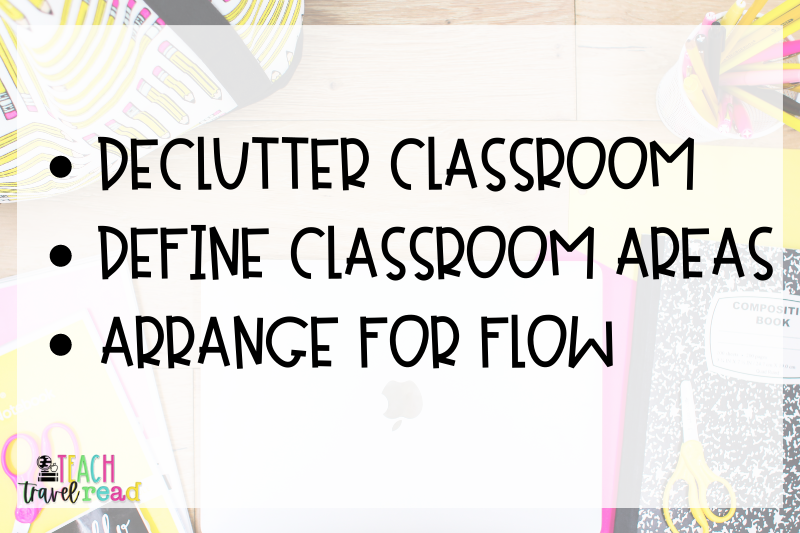
Setting Up An Organized Classroom
Creating an organized classroom starts with careful planning. Before setting up your classroom, think about your needs and determine the best layout for your teaching style and grade level. Consider things such as classroom size, available storage space, and flexibility for different learning activities. Once you have a clear vision, it’s time to get to work.
- Start by decluttering and removing any unnecessary items. Do you have materials that you haven’t used in the past 2+ years? Get rid of them! Sort through materials and resources, keeping only what is essential and relevant to your curriculum.
- Next, establish designated areas for different classroom activities, such as reading corners, small group instruction, and storage areas. Define these areas of the classroom and practice the routines and procedures for using each spot.
- Finally, arrange furniture and learning materials in a way that promotes flow and accessibility. Aim for a balance between open spaces and defined areas to facilitate movement and collaboration.
Create a Schedule and Routine
A well-organized classroom thrives on structure and routine. Establishing a consistent schedule and routine helps students feel safe and understand expectations.
Start by creating a daily schedule that outlines the different subjects and activities throughout the day. Display this schedule prominently in the classroom, ensuring students can easily refer to it. Be sure to include transition times and breaks to help students manage their time effectively.
In addition to a daily schedule, establish routines for common classroom tasks, such as morning routines, transitions, and clean-up procedures. Teach these routines explicitly at the beginning of the school year and reinforce them consistently. By establishing a predictable schedule and routine, students will become more independent, saving instructional time and reducing disruptions.
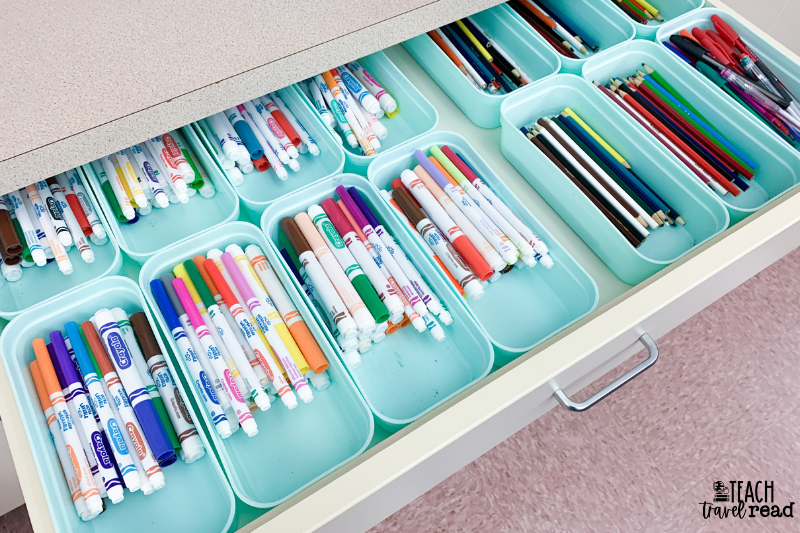
Organizing Supplies and Materials
Another important part of classroom organization is effectively managing supplies and materials. A well-organized supply system ensures that students can easily access and return materials, promoting independence and responsibility.
Start by categorizing supplies and materials into different containers or bins. Clearly label these containers using visual cues, such as images or color coding, to support young learners or students with limited language proficiency. Consider using transparent or labeled bins for easy identification. Also, create a central space for frequently used supplies, such as pencils, erasers, and scissors. This will prevent students from wasting time searching for these items.
Implement a system for distributing and collecting materials, such as color-coded folders or trays, to streamline the process. Encourage students to take ownership of their materials by teaching them how to properly store and organize their belongings. I like to use a visual on the first day of school that shows what a desk should and should not look like. Don’t forget to check regularly to assess and replenish supplies as needed.
Managing Paperwork and Grading
Paperwork can quickly become overwhelming and take up valuable classroom space if not properly managed. To maintain an organized classroom, establish a system for managing paperwork and grading.
Start by creating designated areas for different types of paperwork, such as student work, lesson plans, and data, and private documents. Use labeled bins, folders, or file organizers to keep these documents organized and easily accessible. Consider implementing a color-coded system to differentiate between different subjects or classes.
Develop a routine for managing paperwork, such as grading assignments at specific times or setting aside time for filing and organization. Utilize digital tools, such as online grade books or learning management systems, to reduce paper clutter and streamline grading processes. Encourage students to take an active role in managing their own paperwork by providing them with individual folders or portfolios. Regularly purge and archive old documents to maintain an organized and clutter-free classroom.
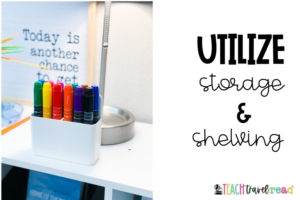
Utilizing Storage and Shelving Solutions
Effective storage solutions are essential for maintaining an organized classroom. By utilizing storage and shelving, teachers can maximize space and keep materials easily accessible. Start by assessing your storage needs and available space. Consider using vertical space by installing shelves or bookcases. Use clear plastic bins or baskets to store materials and resources, making it easy to see what is inside. Label these bins and baskets for easy identification.
Think about utilizing wall space for storage by installing hooks or hanging organizers. This can be used for items such as backpacks, coats, or frequently used supplies. For small items, such as classroom supplies or manipulatives, use drawer organizers or small containers to keep them organized and easily accessible.
Classroom Layout and Furniture Arrangement
The layout and arrangement of furniture plays a huge role in classroom organization. A well-planned classroom layout promotes flow, accessibility, and collaboration.
First, consider the different learning activities that will take place in your classroom. Arrange furniture in a way that supports these activities, such as creating small group areas or a dedicated reading corner. Ensure that furniture is arranged to facilitate movement and minimize distractions.
Second, think about the traffic flow and ensure that students can easily access materials and resources without disrupting others. Create defined spaces for different classroom functions, such as a designated area for whole-group instruction, small group work, and independent study. Use rugs, dividers, or shelving units to create boundaries and visually separate these areas.
Third, consider the placement of teacher and student desks. Position your desk in a way that allows for easy supervision of the classroom while maintaining accessibility to students. Or get rid of your desk altogether. I haven’t had a teacher desk for more than 5 years and I don’t miss it at all! Arrange student desks or tables in a way that promotes collaboration and interaction. Also, be open to moving the desk layout in your classroom. Check out other teachers’ classrooms for ideas and inspiration.
Digital Organization Tools for Teachers
Technology offers numerous tools and resources to support classroom organization. By using digital organizational tools, teachers can save time and reduce paper clutter.
One of my favorite ways is by using digital planning systems. I map out my curriculum for the entire school year with a digital template. I also lesson plan using a digital planner. This makes it easy to access anywhere and to share with teammates, substitutes, and special education teachers.
You also should use learning management systems (if your school has one) to organize and give assignments, resources, and materials. This eliminates the need for physical copies (time saver!) and allows for easy tracking and submission of assignments.
Thinking about all those meetings that you need to attend? Explore digital note-taking tools, This reduces the need for physical filing and makes documents easily searchable.
Lastly, use digital grading tools or online grade books to keep the grading process simple and provide timely feedback to students. I still keep a paper copy, just in case of any tech issues. You should also have students use digital tools for organization, such as digital portfolios or online document storage.
Classroom Organization Tips for Different Grade Levels
Let’s explore some classroom organization tips for different grade levels:
**Early Childhood (Pre-K and Kindergarten)**: Utilize visual cues, such as pictures or color coding, to support young learners in identifying and accessing materials. Implement a consistent routine that includes time for independent play and exploration. Use low shelves or open storage bins to promote independence and easy access to materials.
**Elementary (Grades 1-5)**: Develop a system for managing student supplies, such as individual supply boxes or caddies. Teach students how to properly store and organize their belongings. Implement consistent routines for transitioning between activities, such as using visual cues or timers.
**Middle School (Grades 6-8)**: Encourage students to take responsibility for their own organization by providing them with individual folders or planners. Teach students how to effectively use digital tools for organization, such as online calendars or note-taking apps. Implement consistent routines for turning in assignments and keeping track of deadlines.
**High School (Grades 9-12)**: Teach students strategies for managing long-term projects and deadlines, such as using project management tools or creating timelines. Encourage students to utilize digital tools for organization, such as online collaboration platforms or digital portfolios. Implement consistent routines for managing and accessing digital resources.
Maintaining Organization Throughout the School Year
Maintaining an organized classroom requires ongoing effort and consistent routines. Here are some tips for maintaining organization throughout the school year:
**Regular Decluttering**: Set aside time each day/week/month to assess and declutter your classroom. Remove any unnecessary items and reorganize materials as needed. Encourage students to do the same with their personal belongings.
**Consistent Routines**: Reinforce classroom routines and expectations regularly. Review routines as needed and make adjustments based on student needs and feedback.
**Regular Maintenance**: Schedule regular maintenance tasks, such as cleaning whiteboards or sharpening pencils, to prevent clutter and maintain a clean and organized classroom.
**Reflection and Feedback**: Regularly reflect on your classroom organization and seek feedback from students or colleagues. Assess what is working well and what needs improvement. Use this feedback to make adjustments and refine your organization strategies.
**Professional Development**: Seek out professional development opportunities related to classroom organization. Stay up to date with the latest research and best practices in organization and classroom management.
Classroom Organization Wrap-Up
Creating an organized classroom is helps with effective teaching and learning. An organized classroom promotes independence, reduces distractions, and maximizes instructional time. By implementing the tips and tricks shared above, teachers can transform their learning spaces into well-organized environments that foster productivity, engagement, and success. Remember, classroom organization is an ongoing process that requires careful planning, consistent routines, and regular maintenance. Embrace the challenge and take charge of your classroom organization. Your students will thank you, and you’ll enjoy the benefits of an organized classroom for years to come.

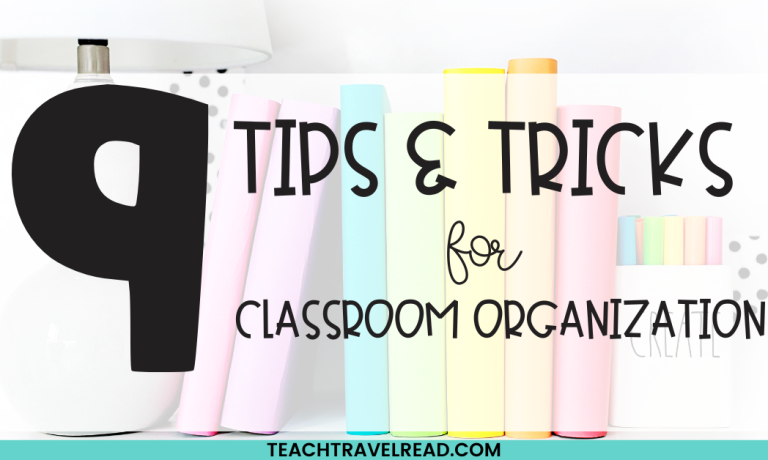
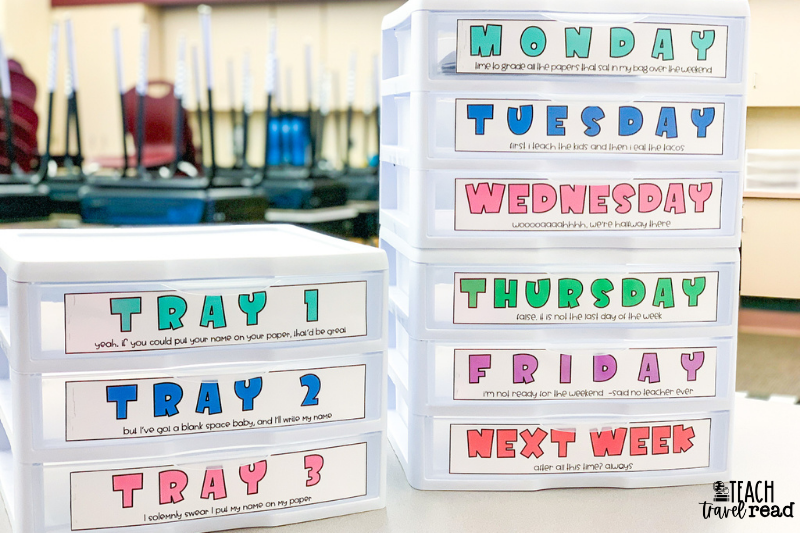
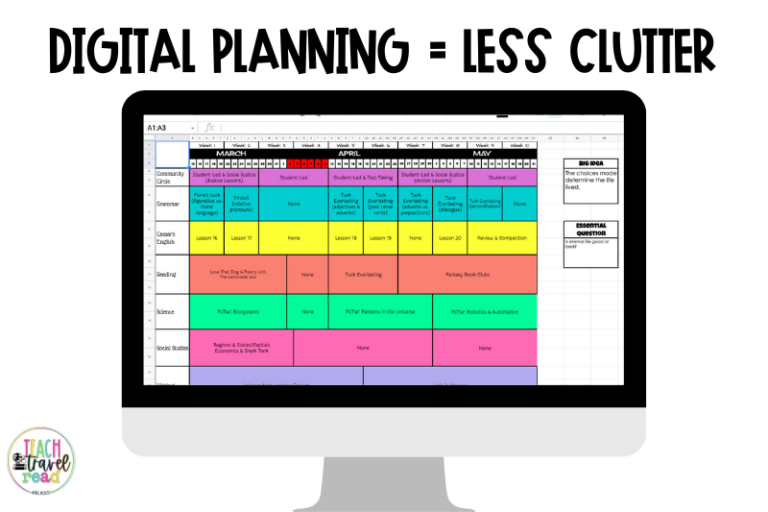

One Response